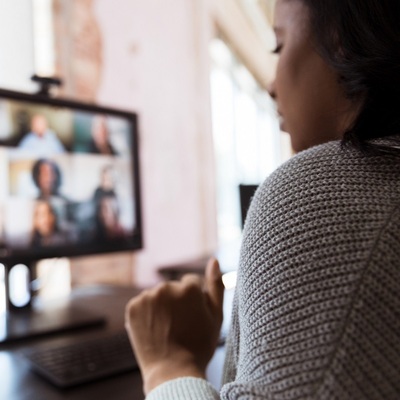A five-step guide to conquering pre-conference anxiety and making meaningful connections at in-person gatherings.

Recently I experienced my first post-pandemic, in-person, maskless gathering since restrictions were relaxed when I joined 160 other partners from around the globe at the Boyden World Conference in Chicago. I had forgotten how much I missed the personal interactions, conversations and genuine joy of spending time with colleagues and like-minded people committed to the talent and leadership of the companies and individuals we work with. The experience reminded me that it’s all about the people, and relationships are at the heart of everything.
At the same time, I have to confess, I don’t normally like conferences. And I have found that whenever I reveal a hidden feeling that causes me anxiety, I am rarely alone. I shared this feeling with a colleague, sheepishly admitting that these situations, to be completely honest, can make me depressed. As I confided my secret anguish, she seemed almost relieved, admitting that she “gets it” because she feels the same way when it comes to attending a conference or large gathering, and doesn’t know why.
Our instant solidarity was my reward for being the first to expose my kryptonite. Knowing there must be more people out there who experience the same type of melancholy, I became inspired to broaden the circle of conversation and shared my feelings with more individuals before and after the conference. To my own surprise, I had formed a de facto support group of conference attendees singing the blues – all suffering the same affliction.
None of us wanted to miss out on the experience. Nothing beats the one-on-one personal connecting and organic sharing of information with random networking opportunities. So after much contemplation, I came up with this five-step process for overcoming and changing the tune of the conference blues.
Step 1. Plan and prioritize
Read the conference program in advance. Prioritize. Decide what is “important” to attend and what might be “interesting,” and scratch out the “unnecessary” items. Find out who is going to be there in advance. Think about what you want to get out of the conference – what is essential to make it worthwhile. Set goals or targets for yourself, either by day or by the end of the conference. Write out your plan of action.
Step 2. Focus on connecting vs. networking
Contact the people you want to meet in advance if possible, or make a list you can refer to in order to find them when you’re there. Keep in mind that networking is not about collecting business cards but about connecting with people. Be open about sharing your interests, knowledge and ideas. This will organically connect you with the people you want to get to know better. It will also leave you with a sense of accomplishment when the conference is over. Take pictures of those you enjoyed meeting as a way of documenting who you met, and share those photos with them when you return home. This will help remind them who you are and keep a line of communication open.
Step 3. Check your energy meter
This is where your actions count. Don't expend valuable energy flitting from one person to another. Don’t try to meet everyone, engaging in meaningless chitchat – it’s exhausting and depleting. Instead, decide who you want to have meaningful conversations with and get to know better, and spend quality time with those people. Whether it’s two or six people, spend your energy on them and create deeper connections. In doing so your energy meter will stay on the full side of the gauge and hopefully be recharged. In striving for meaningful connections and engagement, the conference experience can actually be, I have to admit…fun.
Step 4. Take time out and self-care
Start recognizing when your energy meter is getting close to empty. This is when you need to politely excuse yourself and go find a quiet place to be alone, go back to your room, or take a walk outside to get some fresh air. The most important thing to do at this point is to take a time out for yourself, recharging your battery and paying attention to what you need. This meditative moment is the key to your survival and the secret weapon for staving off the advances of disconnection and depression. Self-care is all about knowing what you need at the right time. Don’t lose sight of that when you are surrounded by people who want a part of you. Pay attention to what you’re feeling and act accordingly. Don’t be afraid of taking a time out. Chances are you won’t be missing anything.
Step 5. Follow up with others – and with yourself
As the conference comes to a conclusion, check-in with yourself to make sure you got what you wanted out of the experience. If not, evaluate what you need and take action to make it happen. When you return home, take the next day to follow up with your new conference friends and explore ways to stay connected for mutual benefit. Chances are you’ll discover that you’ve both benefited from the experience and – whether you struck up a friendship or a multimillion-dollar deal – it’ll be worth it.
Taking these steps before, during and after a conference or other large professional gathering should help alleviate any anxiety you might feel toward it. Having a plan and being prepared are great confidence boosters. Changing the tune of the conference blues can also help you get much more out of the experience. You’ll budget your time and energy wisely, make higher-quality connections, and perhaps most importantly, actually enjoy it.




